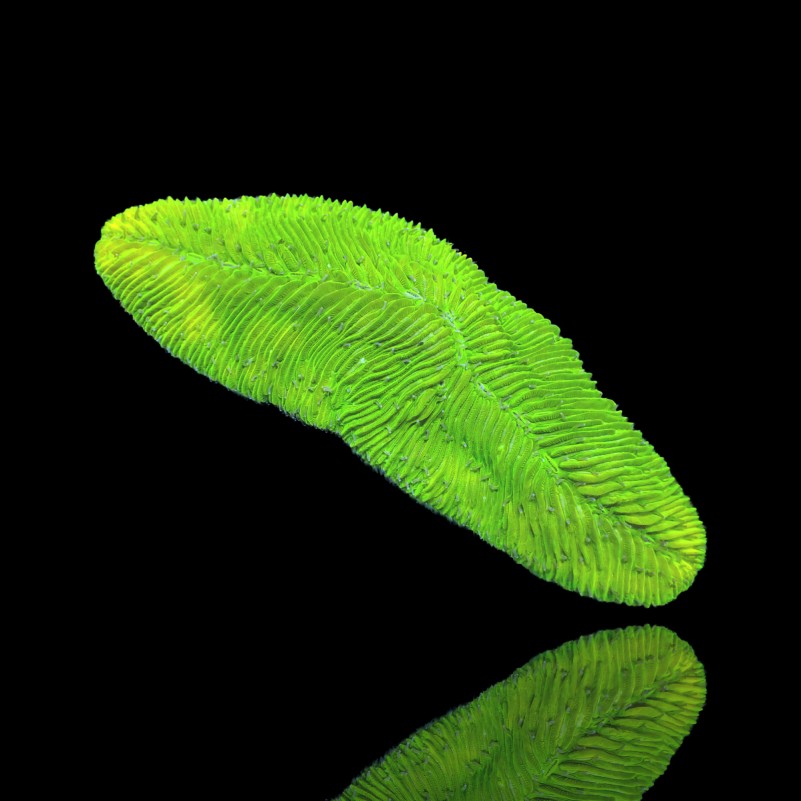Ctenactis crassa
Commonly known as the "Green Tongue Coral" or "Meat Coral," Ctenactis crassa is a species of coral found in the family Fungiidae. Here are some key details about Ctenactis crassa:
Description
- Appearance: Ctenactis crassa is characterized by its elongated, oval, or tongue-shaped appearance. It can grow up to 25 cm in length and 5 cm in width. The surface of the coral is covered with septa (radial ridges) that are often green or brown in color, giving it a distinctive and attractive appearance.
- Structure: It is a free-living coral, meaning it is not attached to the substrate. This allows it to move slightly in response to water currents and sediment accumulation.
Habitat
- Distribution: Ctenactis crassa is found in the Indo-Pacific region, including the Red Sea, eastern coast of Africa, and throughout the Indian and Pacific Oceans.
- Environment: It typically inhabits shallow reef environments, often found on sandy or rubble substrates where it can partially bury itself. It is found at depths ranging from 1 to 30 meters.
Behavior and Ecology
- Feeding: Like other corals, Ctenactis crassa has a symbiotic relationship with zooxanthellae, a type of photosynthetic algae. These algae live within the coral's tissues and provide it with nutrients through photosynthesis. Additionally, Ctenactis crassa can capture plankton and other small particles from the water using its tentacles.
- Reproduction: Ctenactis crassa reproduces both sexually, through the release of eggs and sperm into the water column, and asexually, through budding and fragmentation.
Conservation
- Threats: The primary threats to Ctenactis crassa include habitat destruction, climate change, and pollution. Coral bleaching, caused by rising sea temperatures, can expel the zooxanthellae, leading to coral death.
- Protection: Efforts to protect coral reefs and mitigate climate change are essential for the conservation of species like Ctenactis crassa. Marine protected areas and sustainable reef management practices are crucial for preserving their natural habitats.
Ctenactis crassa is a fascinating coral species, contributing to the biodiversity and structural complexity of coral reef ecosystems. Its striking appearance and ecological role make it an important subject of study and conservation.



